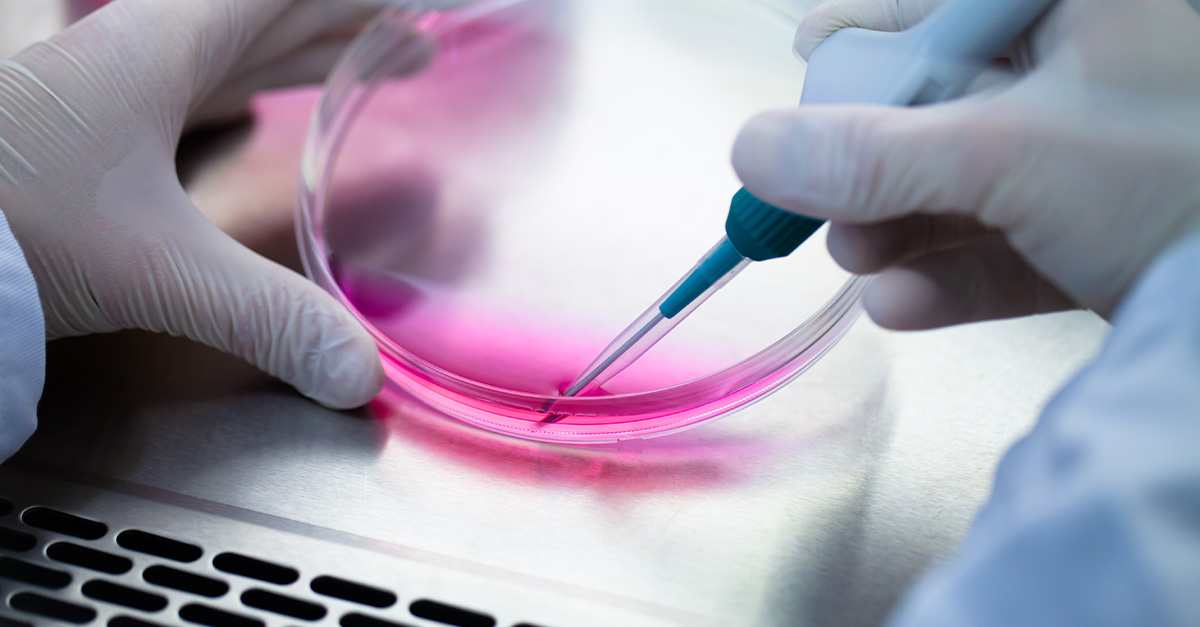Updated: February 2, 2021
-Rehumanizeintl.org
Think about the items in your house for a moment. Do you have coffee creamer in the fridge? Mouthwash or anti-aging cream on the bathroom counter? Spices in your kitchen cabinet? How about a bandage on your arm from a recent vaccine, or prescription drugs? If you answered yes to any of these questions, there’s a chance that you have a product that was made using human fetal cells. While it’s not a universal practice, certain brands in the cosmetics, food, and medical industries use fetal cells for a variety of purposes, from testing and production to inclusion in the final product.
Fetal cells have been used for research since the 1930s. In order to obtain these cells, an aborted fetus is collected after their death, usually by a biotechnology company, university, or medical center. A tissue donation is removed, and the sample is brought to a lab, where the cells are replicated extensively. These cell lines are given an alphanumeric name. For example, the line known as WI-38 was created from the lung tissue of a three-month-old female fetus aborted in 1962. MRC-5 comes from the lung tissue of a fourteen-week-old male fetus aborted in Great Britain in 1970. The replication process is extremely prolific — meaning that a single sample can be used for many experiments and procedures. However, there are limitations; the samples degrade or exhaust over time. The stocks of cell lines must be replenished periodically. For example, in 2015 a new lung sample was taken from a three-month-old aborted fetus to create a cell line known as WALVAX-2.
These cells have a number of applications. Researchers discovered that the cell line derived from the skin of a fourteen-week-old male fetus aborted in Switzerland had restorative properties for skin. Originally, it was used to treat ulcers, burns, and scars. Eventually the skincare brand Neocutis realized that the same properties that healed injured skin could be used to rejuvenate wrinkled skin. They incorporate cells from that fetal line as a proprietary ingredient in some of their anti-aging products.
In the food and beverage industry, biotech company Senomyx uses the cell line HEK-293 for research and development of new flavor additives. To be clear, they are not adding fetal cells into food or beverages. Rather, they use the flavor receptors in the kidney cells of a female fetus aborted in the 1970s as tireless taste testers. This allows Senomyx to efficiently test new formulations of flavor or scent additives, to produce the most flavor with the least amount of sugar and salt. Companies that have developed products with Senomyx include Ajinomoto, Nestle, and Firmenich. Other companies — such as Kraft, Solae, Campbell Soup, and Pepsi — have changed or cancelled their contracts with Senomyx to ensure that no fetal cells were used to develop their products.
Fetal cell lines are used most extensively in the medical industry, in testing, production, and treatment. Fetal cells have been used to test treatments for some degenerative conditions, such as Parkinson’s disease. Human fetal cells are also used to grow the viruses that are used in certain vaccines, since viruses cannot easily be replicated without a cell to host them. The vaccines for chicken pox, rubella, and shingles are examples of vaccines that use fetal cells in their production process. Not all vaccines are produced in this way, and there are some ethical alternatives that don’t use these cell lines in their creation. Some prescription medications, such as Enbrel and Pulmozyme, actually contain fetal cells as an ingredient. The implantation of fetal cells into the body, similar to the process of transplanting an organ, is being explored as a potential cure for ailments such as retinitis pigmentosa.
Despite this type of work going on for decades, not many people know about it. The use of fetal tissue came into the spotlight in recent years when the controversial videos by the Center for Medical Progress — which revealed Planned Parenthood executives discussing the procurement and sale of fetal tissue — were released. But the attention brought to this practice by the videos was still not enough to make it a well-known issue; this is partly due to the fact that the range of its use is not clearly advertised. For example, the FDA does not always require cosmetics companies to include a list of their ingredients, though Neocutis freely admits to their use of fetal cells. Similarly, when the flavor enhancers developed by Senomyx are added to foods, they are in a low enough concentration that they can be labelled as “artificial flavors.” This means that consumers cannot easily trace which foods include those additives. Vaccines manufacturers provide a list of their ingredients, but not all patients read through the ingredient list before getting a shot — and when these ingredients are listed, the cell lines are referred to by their alphanumeric name. If you don’t know what you’re looking for, you might never realize exactly what it means.
There are some regulations surrounding the collection of fetal tissue. For example, a pregnant person can only be asked if they wish to donate blood or tissue from their abortion after they have requested the procedure. Under the Uniform Anatomic Gift Act, it is a federal crime to buy or sell fetal tissue; however, companies and organizations are allowed to collect reasonable fees that cover the costs of handling and processing the tissue. Since there are no hard limits that define what “reasonable” looks like in these instances, it can be difficult to enforce. Additionally, there are no regulations that determine exactly how the tissue can be used. Someone may choose to donate the body of their aborted fetus thinking that their cells will be used for developing medicines, but the sample could end up in the cosmetics or food industry.
There are alternatives — some of which are being tested right now, and some of which are already in use. The viruses for vaccines can be grown in animal cells, for example. In fact, growing viruses in monkey or chicken egg cells used to be common practice; the switch to human fetal cells occurred to try and reduce the risk of transmitting animal diseases into humans, and to ensure the most precise immune response in the human body. Umbilical cord blood and postnatal placentas are being evaluated for their efficacy in replacing fetal cells for research purposes. And stem cells donated by adults, which are obtained nonviolently, are considered “the gold standard” for stem cell research. They’re being used to study diseases such as Alzheimer’s. Unfortunately, we have not yet discovered an alternative that would be able to totally replace fetal cells in all forms of research.
One sample of a cell strain does stretch very far — and recent advancements may stretch them ever further — but new samples are still required periodically, and will be required all the more frequently if we expand the use of fetal cells further. To continue the use of fetal cells in research is to perpetuate the need for acts of violence to provide those cells.
For the pro-life person, the morality surrounding fetal cell usage is complicated. The fact that it’s a human cell is not the problem; the issue is the fact that these cells were obtained by killing human children. On the one hand, fetal cells can be used to produce medicines and vaccines that reduce suffering and save countless lives. On the other hand, fetal cells that are obtained through abortions are inherently derived from an act of violence. As mentioned above, donations of placentas or stem cells from an adult do not kill the donor, so they are perfectly ethical to utilize and research. Additionally, cells can be ethically obtained through from a fetus who died of natural causes.
Some pro-lifers elect to avoid any product that was made with fetal cells at all. Others are willing to accept their use in vaccines and medicines, but refuse food products and cosmetics that use them. Some pro-lifers feel that it’s acceptable to use the cell lines already in existence for medical purposes but advocate against the collection of any additional samples; they also believe that we should find alternatives to eliminate the need for fetal cell research. It is certainly a complex issue. Each individual must weigh the situation according to their own conscience — but those decisions start with information and awareness. The prominent watchdog group, Children of God For Life, has been tending to that mission since 1999. For more information, such as annual report cards and information about ethical vaccines, check out their website.




